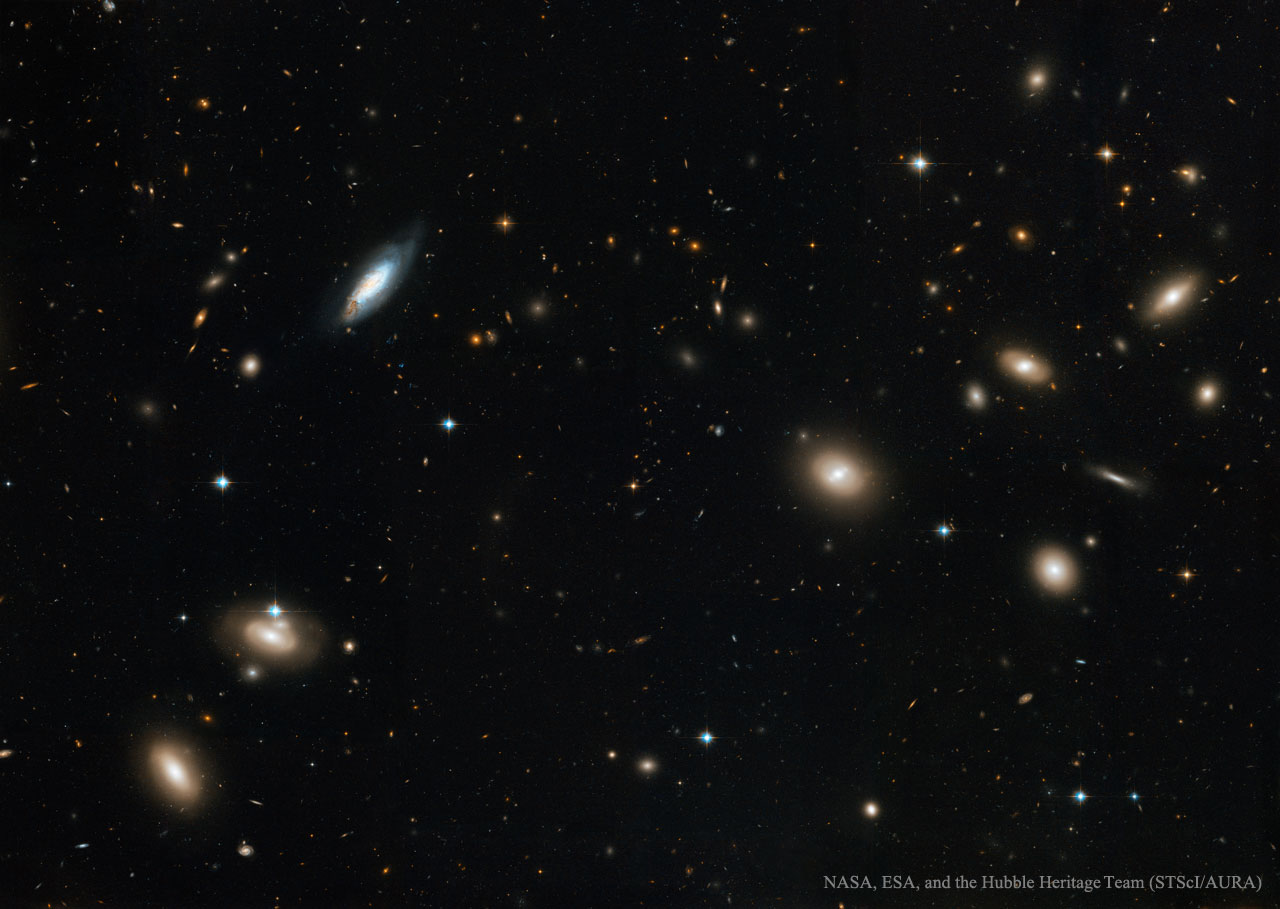There is a loose hierarchy of the cosmos that repeats. Stars form clusters, and then galaxies. Galaxies form clusters, and then these form clusters of their own, called superclusters. Gravity dominates the structure of such collections, yet all we feel and see from Earth is a relatively homogeneous distribution of stars. How do we see this hierarchy? If we zoom in, looking at a patch of sky so tiny that we can’t see any stars, what do we see? This patch of sky is about the size of a grain of sand held at arm’s length, and if we point the Hubble Space Telescope at it for three months of light collection time, this is what we get.

Looking at the biggest objects, it is clear that they are all galaxies, and they form a cluster of galaxies known as the Coma cluster, one of the densest galaxy clusters known. If we look beyond to the background, it looks like the field is full of stars, but in fact, each dot in the image is another more distant galaxy. Every galaxy in the image contains hundreds of billions of stars, some just like our Sun. How many of those could have planets?
Most of the Coma cluster galaxies are ellipticals, meaning they are football shaped. This is the result of many collisions between cluster members over time, and mergers usually result in giant elliptical galaxies, far larger than our Milky Way.
Because we are looking through hundreds of millions of light years of space, we are effectively looking back in time, seeing these galaxies as they looked in the past. The only way to see what they look like today would be to travel there and see them up close, but we barely have the technology to get to the edge of our own solar system.
And now the most humbling part of all. Above I mentioned that we are looking at an area of space the size of a grain of sand held at arm’s length. Well pick a direction, we see the same thing everywhere! Every sand-grain-sized area of sky contains a plethora of galaxies.
The Universe is crazy!
